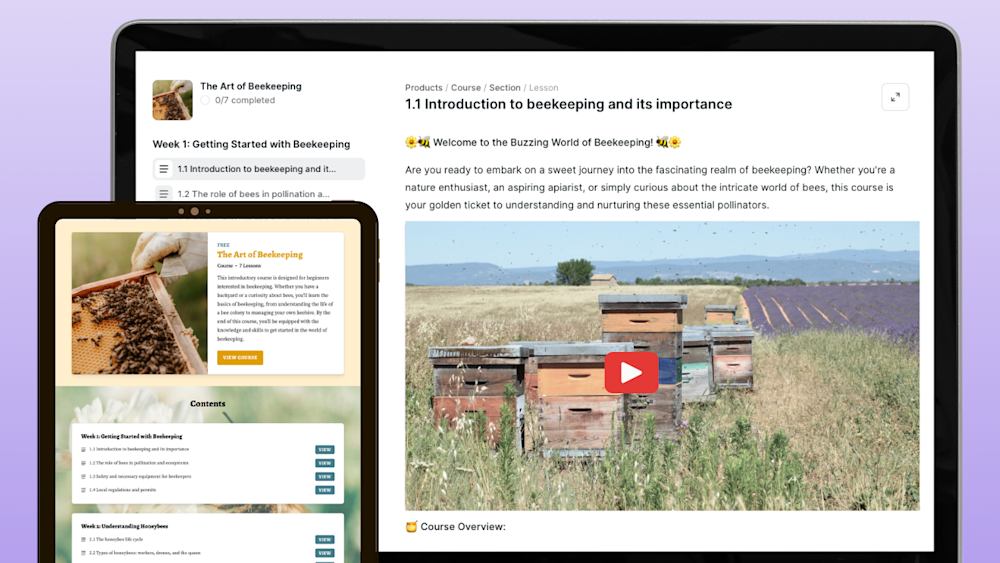The e-learning market is bigger than ever, and its growth shows no signs of slowing down.
From in-person classes moving online, to experts in nearly every field making their expertise accessible, there’s never been a better time to take — or create — an online course.
Although in-person classes and ecourses have a lot in common, their differences are what make the latter such an exciting direction for the future of education.
Creators everywhere are sharing their passion and knowledge and earning passive income through ecourses. And you can, too.
In this article, we’ll answer:
-
What is an ecourse?
-
Why are ecourses so popular with students?
-
What are the benefits of selling online courses?
-
How can you create your own ecourses?
Let’s dive right in.
What is an ecourse?
An ecourse, also called an online course, is any course taught online instead of in-person.
Many ecourses are pre-recorded, but can also include many other components that create an engaging learning experience outside of a traditional classroom environment:
-
Live online sessions
-
Discussion boards
-
Assignments and projects
-
Breakout groups
-
Online membership communities
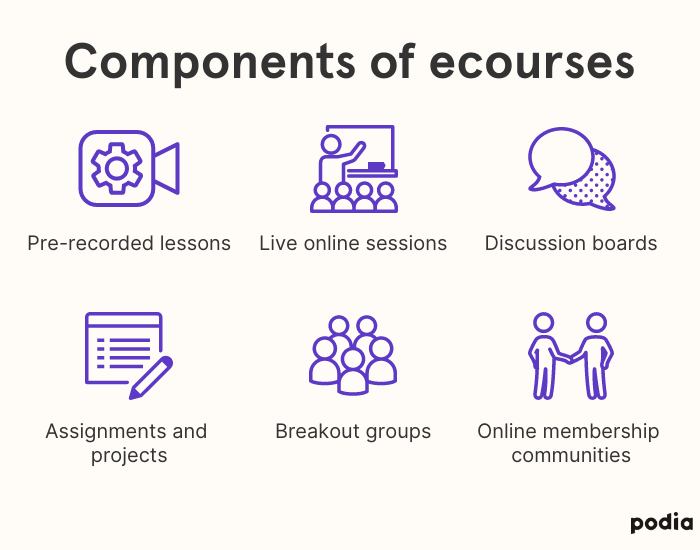
Many people think of ecourses as offerings from colleges and universities, but creators, groups, and organizations of all kinds can create online courses.
With that in mind, let’s talk about some of the different types of ecourses.
Blended learning
Blended learning, also called hybrid learning, combines in-person learning with online classes.
At the university level, blended curricula classrooms often offer both in-person and online sessions for students with unconventional schedules, like those who work full-time.
During the COVID-19 pandemic, however, hybrid learning has become more common for students of all ages.
Blended learning can help students work at their own pace and usually involves both teacher-led instruction and self-led digital learning.
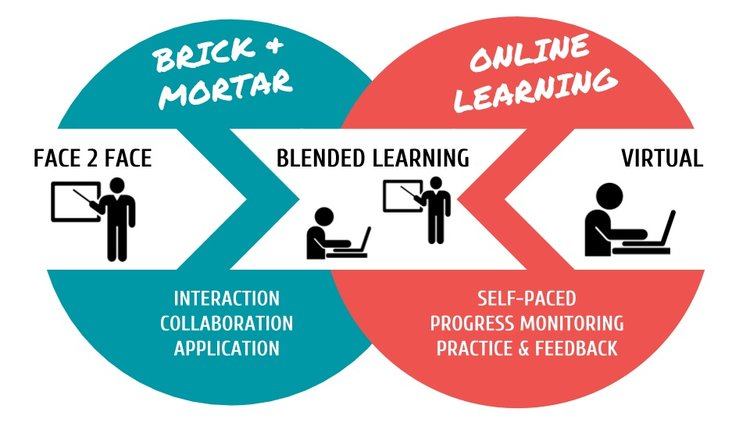
Online degree programs and bootcamps
More and more universities have started offering fully online programs for students who value flexibility in their education and schedule.
In 2018 alone, nearly seven million students enrolled in online courses through degree-granting institutions in the U.S.
And online education works: 52% of graduate students in the U.S. found their online college-level education provided a better learning experience than their classroom education.
In addition to online degree programs, students can also enroll in online bootcamps focused on a specific skill. Coding bootcamps like the 12-week Actualize Online Live program prepare students for entry-level software engineering roles through a condensed, rigorous format.
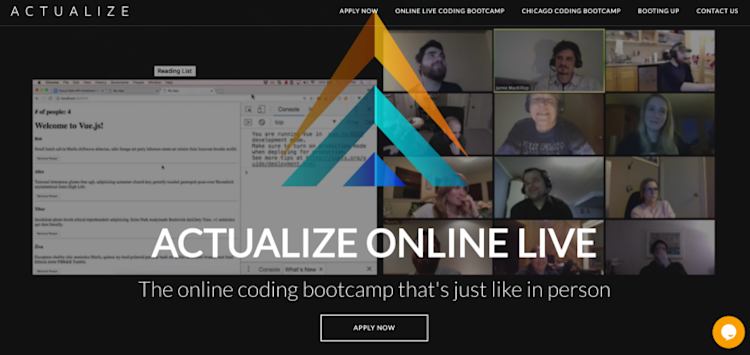
Online courses by creators
This third category is our bread and butter: Ecourses that are built and sold by creators. These creators share their expertise to help their students achieve a goal or solve a problem.
For example, Khe Hy created his six-figure business, RadReads, based on his own lived experiences. One of his ecourses, Supercharge Your Productivity, teaches other professionals how to achieve that same productivity mindset.
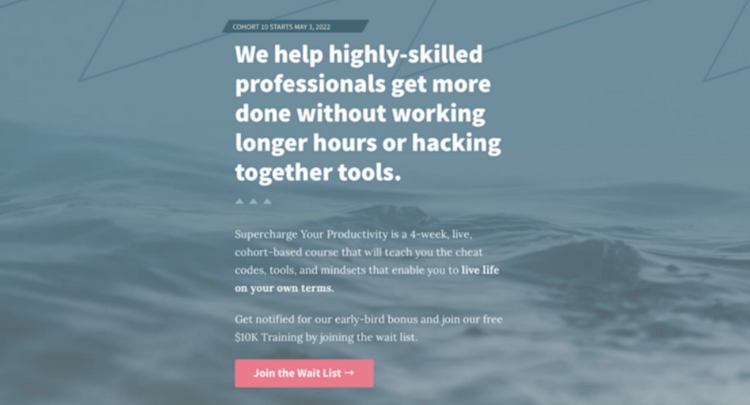
Khe began teaching his students the way he views prioritization, goal setting, and time management through his "$10,000 work" framework . He empowered his students to apply these new frameworks in their own lives, and they did so — with stellar results.
For some creators, like Khe, creating and selling digital products is their full-time job. For others, creating ecourses is an online side-hustle or passion project.
Either way, they’re part of a big opportunity: The self-paced e-learning market is expected to grow by over six billion USD by 2024.
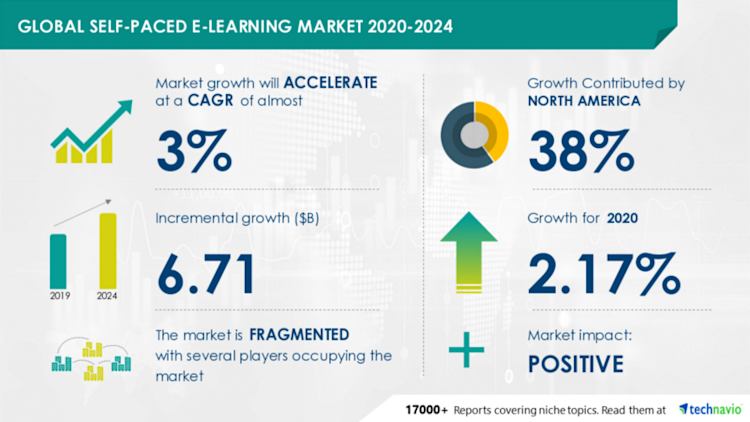
What explains that massive growth?
Keep reading to find out.
Why are ecourses so popular?
We know that the e-learning market is booming. But why do students seek out ecourses instead of traditional learning? Here are three big reasons.
Flexibility and convenience
Online courses make it easier for students to learn on their own terms.
In 2020, that flexibility became more important than ever. As more and more business owners moved their products and services online, customers followed suit.
Ecommerce spending in 2020 was 44% higher than in 2019.
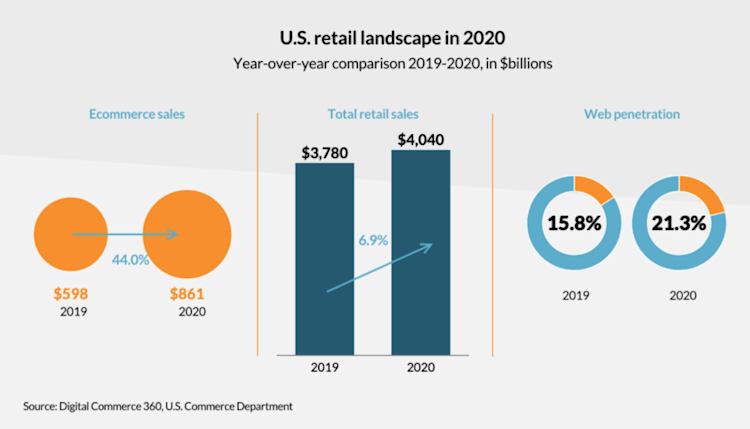
The world of education saw a similar shift:
-
61% of students working toward a bachelor’s degree reported that their fall 2020 classes changed format, such as moving from in-person to online learning.
-
Google saw an increased interest in its online certificate programs.
-
LinkedIn Learning reported a 46% increase in time spent learning by enterprise learners between February and March 2020.
During tumultuous times, the flexibility and accessibility of online courses make them an excellent alternative to the structure of in-person learning. And during economic downturns, demand for learning new skills goes up.
What does this trend mean for creators?
At the beginning of the COVID-19 pandemic, we saw deeper and deeper engagement from creators’ audiences on Podia, with an unprecedented surge in digital product sales:
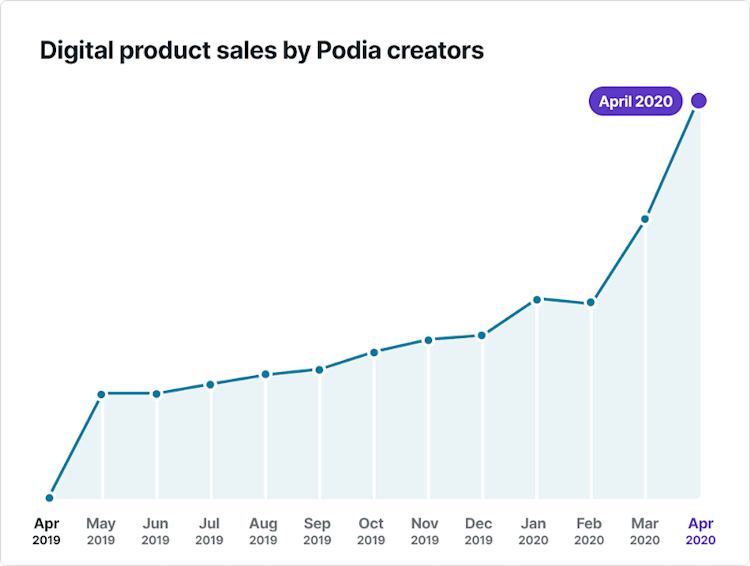
And even after the economy recovers, Spencer Fry, Podia’s CEO, predicts this online-first trend will continue for years to come:
“With this trend of online shopping, more people are going to be searching for digital products (e.g., live cooking classes or piano courses) before looking for a local venue that offers in-person events.
This will lead to more creators hosting online events rather than in-person. It’ll especially be true for people who want to test whether or not they have an audience of customers before investing in local space.”
To keep up with this demand in e-learning, in-person instructors are converting offline classes to live-streams.
Take podcasting expert Jay Acunzo, for example. When the world shut down during the pandemic, Jay found his business turned upside down. “Three years of hard work building a six-figure speaking business came crashing down in about two months,” Jay told us.
He knew he needed to adapt to the new, online-only reality. He decided to turn his showrunning expertise and storytelling skills into digital products, including an online course: Growable Shows.
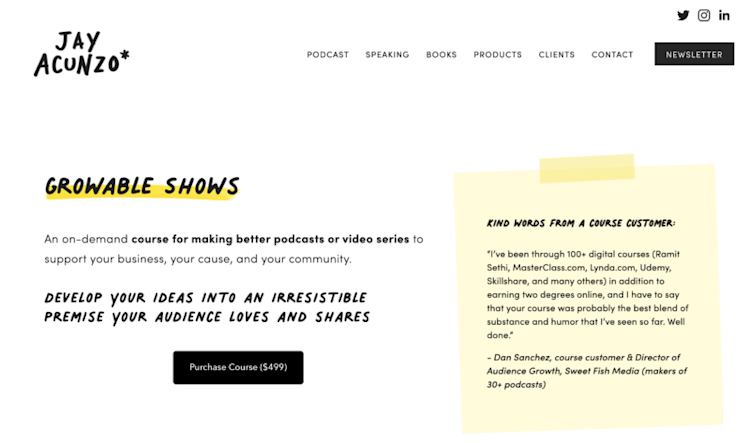
Within the first two weeks of launching an online course on Podia, Jay made $15,000. And thanks to the passive income, it’s his most profitable product.
(See how easy it is to sell online courses like Jay with Podia. Sign up for your free 30-day trial now.)
Another big perk of online learning? The price tag.
Less expensive than traditional education
The average college tuition for the 2020–21 school year ranged from $9.7k to $35k.
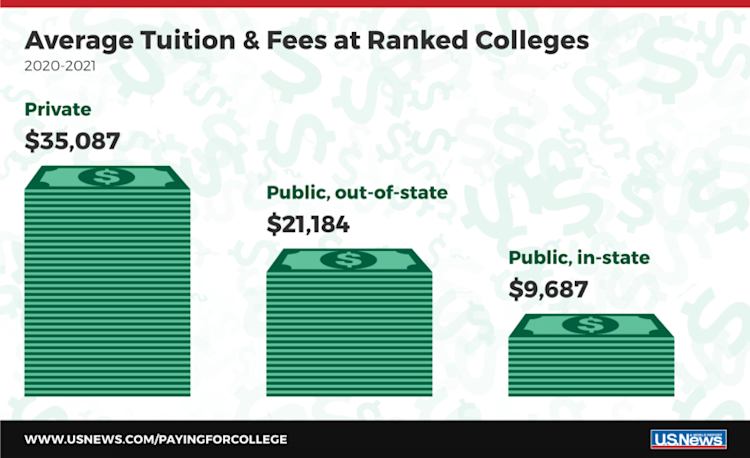
Education in the U.S. is far from affordable. Over 44 million Americans have student loan debt, adding up to a massive $1.71 trillion in total U.S. student loan debt.
In-person learning is so expensive in part because of everything tuition is meant to cover: Facility fees, faculty salaries, campus upkeep and activities, and much more.
On the other hand, online courses tend to cost much less because there are fewer expenses associated with offering them. In a study of 133,000 course sales from Podia creators, our research found that 57.82% of online courses were priced under $100.
Of course, online courses aren’t a one-to-one equivalent for a college education. But for students looking to learn a specific skill or subject, a $100 ecourse is a far more financially accessible option than thousands of dollars for a university credit.
With online courses, creators can also offer payment plans to make expensive courses more affordable.
Payment plans can even boost your bottom line: 84% of consumers appreciate the flexibility of paying for large purchases over time, and 35% of consumers are more likely to make a purchase if a brand offers monthly payments.
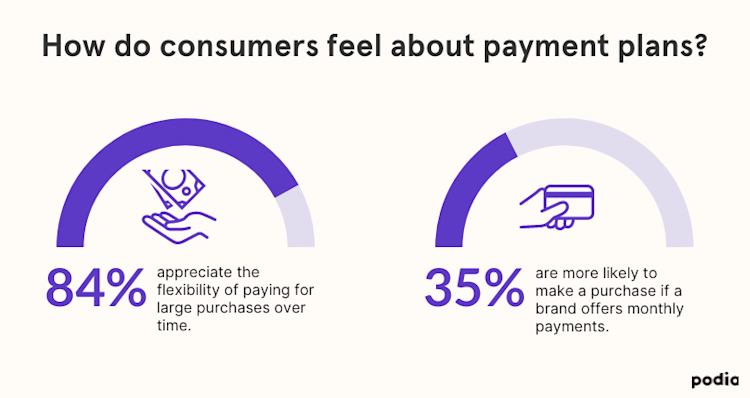
When students can afford the educational content they’re interested in, they can access new ideas and people that broaden their perspectives. That’s exactly what our third and final ecourse perk is all about.
A diverse range of topics and perspectives
The beauty of ecourses is that they can teach both traditional academic subjects and topics that are too niche or technical for a university course catalog.
If you can think of a topic, there’s probably an online course about it already, from sleep training to podcasting and everything in between. Ecourses allow students to learn more about nearly any topic under the sun and connect with others who share their interests.
That connection is a major draw of online courses. 63% of students who prefer online learning to in-person find value in the interactivity of live online classes.

Online courses with a live component sell better — and for higher prices — than those without any interaction.
“The powerful thing about having live webinars or discussions that go along with your online course is that it creates accountability, community, and a personal touch, all adding value to the student’s experience and their outcome.”
Now you know why students love ecourses. But what makes them a favorite of online creators, too?
Benefits of selling online courses
For course creators, selling digital products like online courses come with a bevy of benefits. Here are some of the top perks.
Earn passive income
At Podia, we’ve seen more and more creators taking their products and services online.
Entrepreneurs are earning their first “online dollar” by the millions. And they’re doing it by selling profitable digital products — like online courses — that let creators earn passive income.
Once you create your online course, you’ve put in the same amount of resources to create your product whether you enroll one student or one million.
Digital products like online courses are also more scalable than physical goods. You have lower startup costs because you don’t need to rent a physical office space, commute, or secure inventory space.
One creator who knows just how profitable digital products can be is Justin Jackson. Justin started blogging in 2008.

Over the next ten years, he grew his side-hustle into a full-time, profitable career.
“If you read my 2017 year-end review,” he explained, “It started in 2012, and there’s a little bit of revenue. And then 2013, there’s a little bit more, and then 2014, a little bit more, 2015, a little bit more.”
The switch from side-hustle to full-hustle paid off big — to the tune of $190k in revenue in 2017. Striking out on his own as a solopreneur let Justin grow beyond a corporate role, and he reaps the benefits of that growth year after year.
Web design expert and course creator John D Saunders shared a similar experience when it comes to passive income:
“While I’m sleeping, I’m making income. While I’m out at the park with my family, I’m getting sales. Podia lets you have a different type of income that’s not tied to your time.”
John is also a pro at the next benefit on this list — learning as you grow.
Learn by doing
Whether you launch an ecourse as a side-hustle or become a full-time creator, the challenges of starting your own company can help you grow and learn across so many different areas.
The best way to learn is by trying and making mistakes — even if that means a failed product launch.
John saw his first online course launch flop because he assumed what his audience wanted rather than asking them. “It was a feeling in my gut that I felt the world needed this, and that was the first mistake,” John told us.
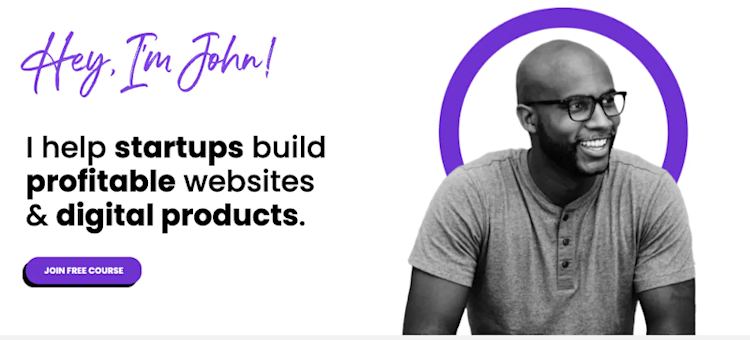
John learned from the experience and took the time to validate the product idea for his next course.
The results?
A $10,000 launch day and $100,000 overall from his Podia site.
Along with growing professionally, selling ecourses can also help you grow your audience.
Reach more people
No matter your niche, online courses can help you connect with a broader audience than in-person classes ever could. Instead of being limited by geography, you can reach people around the world who share an interest in your topic.
One creator who saw incredible growth by bringing offline students online is software engineer Reuven Lerner.
Reuven transformed his offline training business into online courses to make more money as a developer.
After releasing his book, Practice Makes Python, Reuven created a series of videos to guide students through each exercise. He also started sending free email courses to his subscribers.
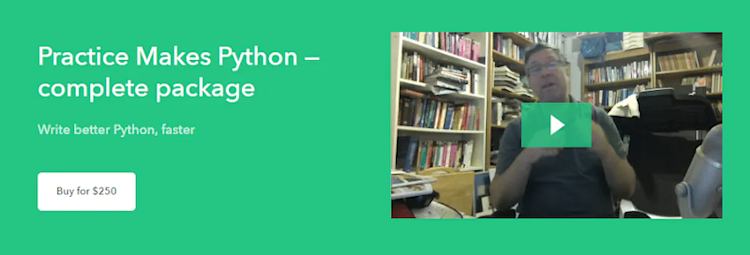
Now, Reuven offers 25 different courses through his Podia site.
“My goal is that within the next year or two I’ll be able to stop training more or less every day of every week,” he shared with us. “And I’ll be able to train in person — say two weeks of the month — and the rest of the time I’ll be able to just work on developing new courses.”
By focusing on his Python know-how and passion, Reuven went from only offering offline training to building a successful solopreneur business teaching students from all over the world.
(Check out Reuven’s tips for creating an engaging online course, too.)
So that’s why you should create an online course. It’s time to learn how.
How to create and sell an ecourse
In this section, we’ll share a brief overview of the steps to create a great ecourse. If you’re looking for a deeper dive, check out this complete step-by-step guide to creating, launching, and selling a profitable online course.
1. Choose a course topic
To find out what your target audience is interested in learning, conduct some customer research. What are they talking about on social media? What questions are they seeking to answer?
Once you have some online course ideas in mind, it’s time to figure out which one to run with. That’s where the Passion/Profit Matrix comes in.
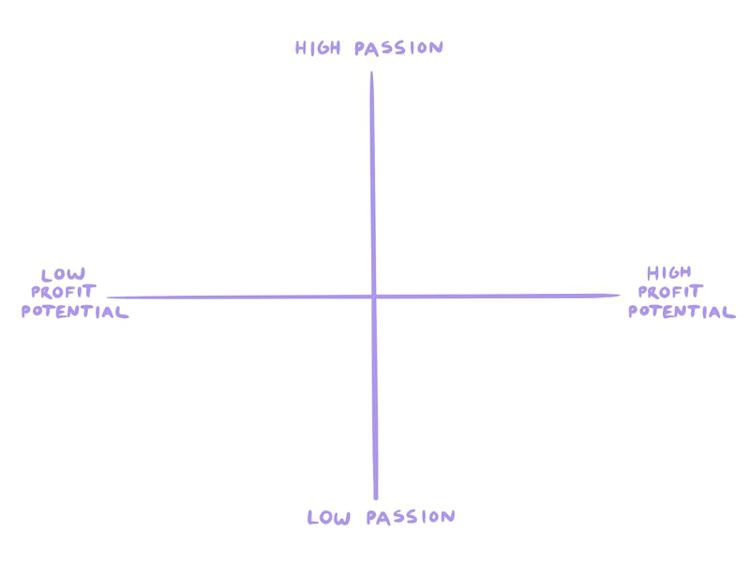
The Passion/Profit Matrix helps you answer two questions:
-
Passion: How excited are you to work on this?
-
Profit potential: Do people already spend money to solve this problem?
Look for ideas in the upper right quadrant: The ones that you’re excited to work on and that you’ll be able to sell.
2. Plan out your ecourse content
After you’ve settled on an idea for your course, you need to start planning out your content. You have several different content types to choose from, including:
-
Video
-
Audio
-
PDFs
-
Worksheets
-
Text
Video is the gold standard for course content, but every type of content has its pros and cons.
Ben Toalson, Podia’s video content marketer, recommends outlining and structuring your course content ahead of time, especially if you want to create engaging course videos.
“When you outline your content, it’s a lot easier to create a clear structure. A beginning, middle, and end. Humans like structure, especially when they’re trying to learn new content.”
3. Create your course content
Next up is the bulk of the course creation process: Recording, writing, and putting together your course content.
Recording video content for your course might seem daunting, but don’t worry. You can record high-quality videos at home — no pricey equipment or studio space needed.
Plus, the content of your course videos matters more than a fancy setup.

If you’re struggling to overcome self-doubt, remember that your students aren’t taking your course to watch a perfectly polished expert. They’re taking your course because they’re passionate about the subject and want to learn from you.
For more tips on creating course content your audience will love, check out this guide on how to create course content in every format.
4. Choose an online course platform
From Udemy and Teachable to WordPress, there are a ton of online course platforms to choose from.
I’m certainly biased, but I think Podia is the best option around for creators to sell online courses.
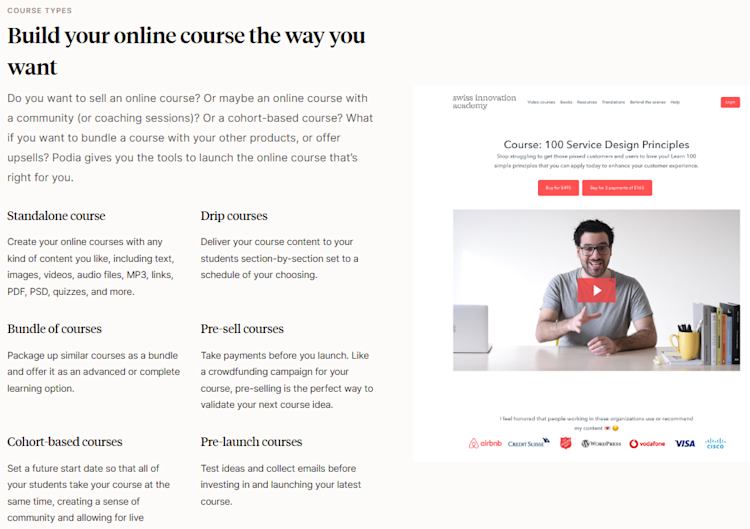
With Podia, you can:
-
Build, market, and sell digital products from one dashboard, with unlimited files and videos on all paid plans.
-
Create and easily manage a custom website without needing any code or plugins.
-
Connect with your audience through email marketing and live chat messaging.
-
A whole lot more…
Don’t just take my word for it, though. Sign up for a free 30-day trial and see for yourself.
5. Launch and promote your course
With your content created and your course platform chosen, you’re ready to launch your course.
To make the most of your course launch, consider pre-launching your online course. When you pre-launch courses, you collect email addresses from potential customers, then keep your email list in the loop leading up to your course launch.
Come launch day, your audience will be ready to press “Buy” as soon as your course becomes available.

For more guidance on launching your course, check out these 12 online course launch tips and this formula for launching an online course.
Note that you need to market your online course before and after launch day. Here are some resources to help you get started:
-
A guide to organic vs. paid social media marketing for creators
-
How to build your email list fast
-
The best video marketing strategies for beginners
Phew — you made it. And now you know the ins and outs of ecourses.
Start making money online by selling ecourses
Ecourses are a favorite of students and instructors alike. And with an e-learning market that continues to grow, now is the time for creators to get in on the action by creating and selling online courses.
To recap, here’s what you need to know about ecourses:
-
An ecourse is any course taught online instead of in-person. Ecourses can include pre-recorded content, live online sessions, and online communities.
-
Students love ecourses because they offer flexibility and accessibility that in-person learning lacks.
-
By selling online courses, creators can earn passive income, grow personally and professionally, and reach a broader audience.
-
To make a great ecourse, focus on creating content that helps your audience solve a problem or meet their goals.
Now, you’re ready to build your first ecourse — and Podia is here to help every step of the way.

